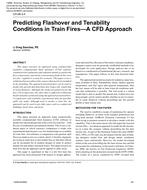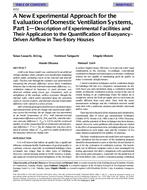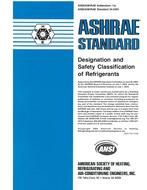This study is meant to provide a better knowledge of the conditions governing thermal comfort and of the energy consumption resulting form different heating systems in dwelling rooms.
The prediction of the global thermal comfort is relatively well known. One can easily assess the Predicted Mean Votes (PMV) and the corresponding Predicted Percentages of Dissatisfied (PPD) at the different points of the occupied zone of a room (1). However, this global analysis is probably not sufficient; there also exist cer.tain risks of local discomfort due to the lack of uniformity of surface temperatures (effect of the cold wall and of the radiant heating sources) and also due to a certain cold air flow (natural convection along cold walls and air infiltration). Unfortunately the local discomfort is inaccurately defined; only some experimental results are available and cannot be a matter of generalization (2)(3)(4).
Lastly, the assessment of heat losses by transmission and ventilation is still insufficiently precise. The present calculating methods do not take account of the heating system used and, in particular, of the real air circulation inside of a room (5).
Different combinations of heating systems, insulation and air infiltration have been studied in a climatic room at the University of Liege.
Some hundred tests have been performed in order to analyse in each case the inside microclimate and the corresponding heat losses (6)(7). The analysis of the results relating to comfort will be supplemented by another experimental study with subjects placed in the climatic room (8).
Citation: ASHRAE Transactions, Volume 84, Part 1, Atlanta, GA
Product Details
- Published:
- 1978
- Number of Pages:
- 26
- File Size:
- 1 file , 1.2 MB
- Product Code(s):
- D-AT-2479


